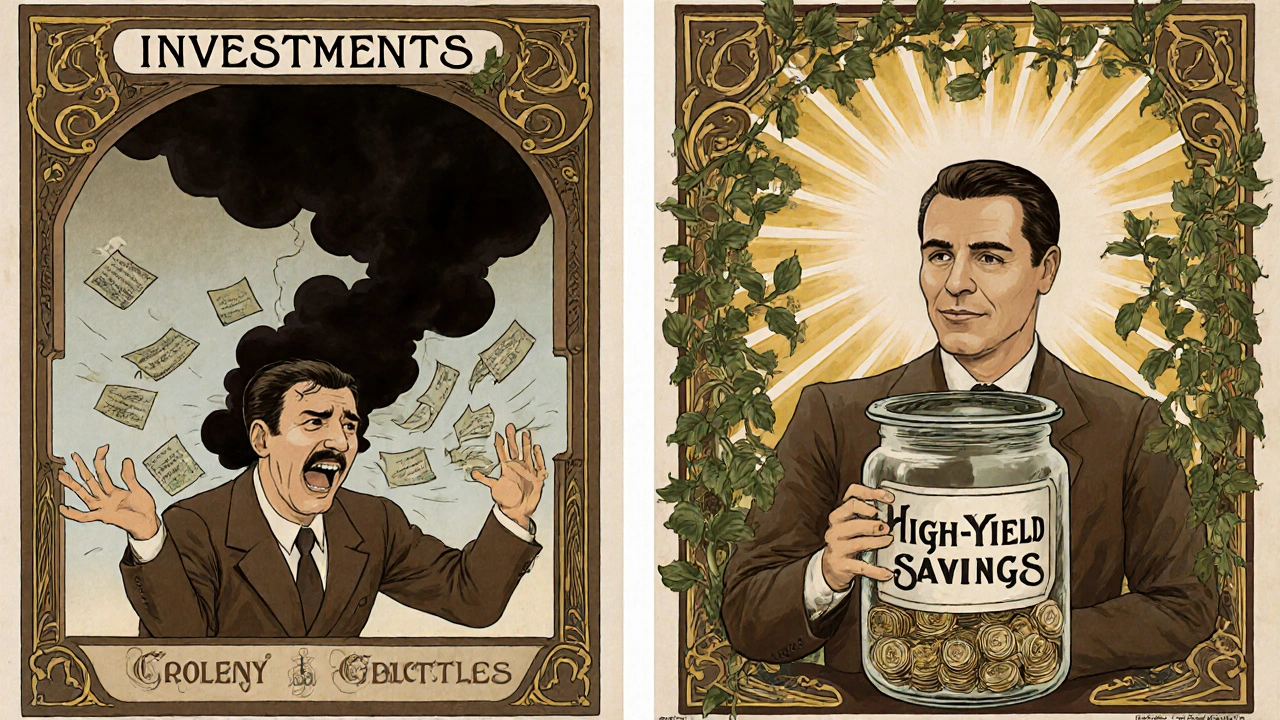Emergency Fund Calculator
Build Your Savings Buffer
Calculate how long it will take to reach your emergency fund goal
Your Savings Timeline
Enter your savings details above to see your timeline.
Before you even think about buying stocks, ETFs, or crypto, there’s one thing you absolutely need: a savings buffer. Not a fancy investment account. Not a high-yield bond fund. Just cash-easy to get, safe, and ready when life throws you a curveball. This isn’t optional. It’s the foundation of everything that comes after.
Why You Can’t Skip This Step
You’ve probably heard it before: "Invest early, invest often." But what if you don’t have the money to cover a flat tire, a broken fridge, or an unexpected doctor’s bill? That’s when people make their biggest financial mistake-they pull money out of their investments. And that’s when losses stick. A 2023 Federal Reserve report found that 36% of Americans couldn’t cover a $400 emergency without borrowing or selling something. That’s not a small number. That’s half of all households living one surprise away from financial panic. If you’re one of them, investing isn’t the problem-it’s trying to invest without a safety net. Here’s the truth: money in the stock market isn’t meant for emergencies. It goes up and down. If your car breaks down and you need $800 next week, you can’t wait for the market to recover. You’ll be forced to sell low, locking in losses. Meanwhile, interest rates on credit cards are still around 20%. That’s way higher than what your savings account earns. So borrowing becomes the default-and that’s how debt traps start.What Exactly Is a Savings Buffer?
A savings buffer is cash you keep separate from your checking account, just for unexpected costs. It’s not for vacations. Not for new shoes. Not for that fancy coffee machine. It’s for the stuff you didn’t plan for: a leaking roof, a missed paycheck, a vet bill for your dog, or a sudden car repair. It’s different from a full emergency fund. A savings buffer is your first line of defense-usually $1,000 to $2,000. It covers the small-to-medium shocks that happen every few months. Once you have that, you build toward a full emergency fund: three to six months of living expenses. But you don’t start there. You start with $1,000. Fidelity’s 2024 guide says that having $1,000 saved changes everything. It gives you breathing room. It stops you from panicking. And it stops you from ruining your investments.Where to Keep It
This isn’t the time for stocks. Not even for bonds. You need cash that’s safe, accessible, and earning something. That means a high-yield savings account. As of mid-2024, the best online savings accounts are paying around 4.25% APY. That’s not much, but it’s better than 0.1% at your local bank. And since you’re not touching it, the interest adds up. Even better? These accounts are FDIC-insured up to $250,000 per person, per bank. So your $2,000 is 100% protected. Don’t put it in a CD. Don’t tie it up in a money market fund that locks your money for 30 days. Don’t confuse it with a brokerage account. This cash needs to be out of sight, but easy to reach. Set up an automatic transfer from your checking account every payday. Even $50 a week gets you to $1,000 in four months.
How Much Should You Save?
Start with $1,000. That’s the number most financial advisors agree on as the minimum starting point. It’s enough to cover a lot of small emergencies without touching your investments. If you can swing it, aim for $2,000. Vanguard’s research shows that people with $2,000 in emergency savings score significantly higher on financial well-being scales. They sleep better. They’re less stressed at work. They’re less likely to make bad financial decisions under pressure. Once you hit $2,000, you can start thinking about the next level: three to six months of living expenses. But don’t rush. Build the buffer first. Then move on. And here’s a hard truth: inflation eats away at cash. If you leave $2,000 in a 1% account while inflation is at 4%, you lose about $60 a year in buying power. That’s why you don’t keep more than you need. Once your buffer is built, start investing the rest. Don’t let it sit idle forever.How to Build It Without Going Broke
The biggest reason people fail to build a savings buffer? They think they need to save big chunks of money. They don’t. Start small. $25 a week. That’s $100 a month. In 10 months, you’ve got $1,000. If you can save $50 a week, you’re there in five months. That’s not impossible. Use automation. Set up a direct transfer from your paycheck to a separate savings account. Even if it’s $20. Even if it’s $10. The habit matters more than the amount. Try the “round-up” trick. Apps like Acorns or Chime round up your purchases to the nearest dollar and save the difference. A $4.75 coffee? $0.25 saved. A $12.30 grocery run? $0.70 saved. Over time, that adds up-especially if you’re already using digital payments. Cut one subscription. Cancel that streaming service you never watch. Skip the daily latte. Redirect that $15 a week into your buffer. You won’t miss it. But you’ll feel the difference when your washer breaks and you don’t have to stress about how to pay for it.What Happens If You Skip It?
People who invest before building a buffer don’t always lose money. But they lose peace of mind. And that’s worse. A Bogleheads forum analysis in early 2024 tracked 47 cases where people sold investments during market drops to cover emergencies. On average, they lost 17.3% on those sales. That’s not just a number. That’s $1,730 gone from a $10,000 portfolio because they didn’t have $1,000 in cash. And then there’s the debt. Credit card interest is brutal. If you charge a $600 car repair and pay 20% APR, you’ll pay $120 in interest just to cover it. That’s 20% of your buffer right there. And if you’re still paying it off six months later? You’re stuck. The psychological toll is real. People without a buffer report constant anxiety about money. They check their bank accounts daily. They avoid phone calls from unknown numbers. They lie about their finances to friends. That’s not living. That’s surviving.

Katie Crawford
I'm a fintech content writer and personal finance blogger who demystifies online investing for beginners. I analyze platforms and strategies and publish practical, jargon-free guides. I love turning complex market ideas into actionable steps.
view all postsWrite a comment